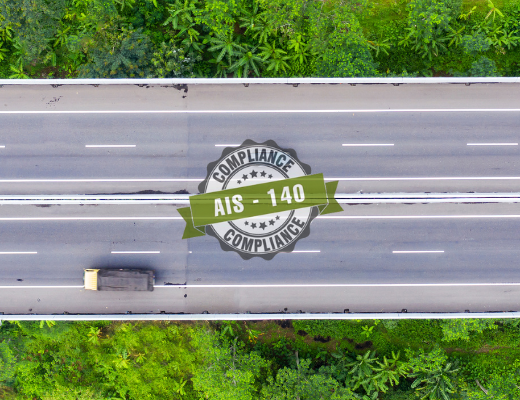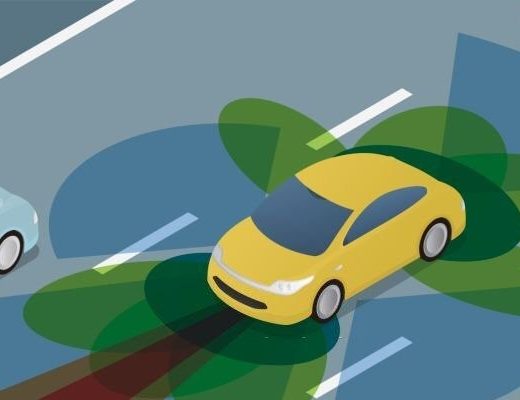Introduction
Road safety is a critical concern in India, with overspeeding being a significant cause of accidents and fatalities. According to the Ministry of Road Transport and Highways (MoRTH), overspeeding accounted for 72.4% of accidents and 75.2% of deaths in 2022. Integrating the Indian Regional Navigation Satellite System (IRNSS), with an operational name of NavIC and Advanced Driver Assistance Systems (ADAS), presents a promising solution to control vehicle speed based on the driving environment as we strive to make our roads safer. This blog explores how NavIC can revolutionise road safety by dynamically adjusting vehicle speeds and preventing overspeeding, thereby saving lives.
Understanding NavIC Integration with ADAS
Navigation with Indian Constellation (NavIC) provides precise location data that can enhance road safety. By fitting vehicles with an Onboard Unit (OBU) equipped with an eSim, NavIC can communicate with the car’s ADAS. This integration allows NavIC to provide real-time input to ADAS about the maximum permissible speed based on the type of road the vehicle is currently driving on, i.e., city road, national highway, or expressway.
How NavIC Controls Vehicle Speed?
The integration works as follows.
- Real-Time Speed Monitoring: NavIC continuously tracks the vehicle’s location and identifies the type of road it is on, such as a city road, national highway, or expressway.
- Speed Limit Input: Based on the location and the type of road the vehicle is on, NavIC sends the maximum allowable speed limit to the vehicle’s ADAS system via the OBU.
- Automatic Speed Adjustment: If the vehicle exceeds the speed limit, the ADAS overrides the vehicle’s manual settings and adjusts the vehicle’s speed to the maximum permissible limit.
- Alerting Authorities: The system simultaneously alerts the concerned authorities about the vehicle’s speed violation, ensuring that traffic enforcement authorities can take the required actions on time.
The Impact of Overspeeding in India
The statistics from MoRTH highlight the severe impact of overspeeding.
- In 2022, overspeeding accounted for 72.3% of road accidents, 71.2% of deaths, and 72.8% of injuries.
- The number of accidents, fatalities, and injuries due to overspeeding increased by 12.8%, 11.8%, and 15.2%, respectively, compared to 2021.
India is witnessing widespread outrage over rash driving. The increase in road accidents and deaths leads to a socio-economic loss of 3.14% of GDP. Notably, 60% of deaths occur in the 18-—to 35-year-old age group. Road safety has become the government’s top priority, aiming to reduce accident deaths by 50% by 2030.
Case Studies Highlighting the Need for Speed Control
Case Study 01: Pune Tragedy
In the early hours of May 19, 2024, a 17-year-old driving an electric luxury sports sedan at 160 km/h collided with a motorbike in Pune, Maharashtra. The accident resulted in the deaths of two individuals. This incident highlights the horrors and consequences of rash driving, especially with high-powered luxury vehicles. Such cars often behave like stray missiles in the wrong hands. Had the vehicle been equipped with NavIC-integrated ADAS, the system would have capped the speed to a safe limit, potentially preventing this tragic loss of life.
Case Study 02: Ahmedabad Disaster
On July 20, 2023, during the night, a sports car driven at 141.27 km/h by a 19-year-old student crashed into a group of people on the Iskon Bridge in Ahmedabad, Gujarat, killing nine individuals. This incident underscores the risks associated with driving powerful sports cars without adequate speed control measures. With NavIC and ADAS integration, the vehicle’s speed could have been automatically adjusted to a safe level, possibly averting this horrific incident.
The Way Forward
Implementing NavIC-integrated ADAS in vehicles can significantly reduce accidents caused by overspeeding. This technology ensures that vehicles adhere to safe speed limits tailored to their driving environment, thereby enhancing road safety.
Summary
Overspeeding remains a significant contributor to road accidents and fatalities in India. By leveraging NavIC technology to control vehicle speeds, we can make substantial strides in preventing these tragedies. This innovative approach not only protects lives but also supports enforcement authorities in maintaining safer roads. Metro Infrasys is committed to pioneering such advancements, contributing to a future where road safety is a priority and every journey is safer.
Join the Conversation
What do you think about using NavIC for adaptive speed control? Please share your insights and help us promote safer roads for everyone.


